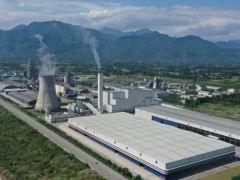据烃加工新闻4月28日消息称,根据美国能源情报署(EIA)的数据,2020年,阿拉斯加平均原油产量为44.8万桶/天,为1976年以来的最低水平。
去年的产量比1988年该州最高的200万桶/天的产量少了75%。在阿拉斯加石油产量达到峰值后的32年中,有28年的产量下降,因为该州的油田已经成熟。阿拉斯加2020年石油年产量下降4%,是美国石油产量更大跌幅的一部分。
跨阿拉斯加管道系统将原油从阿拉斯加的北坡运输到阿拉斯加南部海岸的瓦尔迪兹。由于产量减少,管道输送减少了。石油量的减少导致石油在管道中流动的速度变慢,石油从北岸到瓦尔迪兹的运输时间从1988年的4.5天增加到2020年的26天。
该州的许多地区还没有勘探石油,包括北极国家野生动物保护区(ANWR)。据美国地质调查局估计,ANWR位于该州东北部,可能拥有104亿桶原油。
石油工业是阿拉斯加经济的最大贡献者,尽管产量下降了。阿拉斯加没有州收入或销售税,而是依赖石油和天然气行业的收入。2020年,石油收入占该州预算的三分之二以上。虽然阿拉斯加州的收入基础是石油和天然气行业,但该州的石油产量只占美国所有石油产量的4%。
阿拉斯加的人均石油需求在所有州中排名第三。到2020年,阿拉斯加的石油消耗量超过了除夏威夷以外的任何一个州。石油占该州公用事业规模发电量的16%,在所有发电来源中位列第三,仅次于天然气(38%)和水力发电(31%)。该州三分之一的家庭依靠燃料油、煤油或丙烷等石油产品取暖。
朱佳妮 摘译自 烃加工新闻
原文如下:
Oil production in Alaska reaches lowest level in more than 40 years, reports US EIA
Crude oil production in Alaska averaged 448 000 bpd in 2020, the lowest level of production since 1976, according to the US Energy Information Administration (EIA).
Last year's production was over 75% less than the state’s peak production of more than 2 million bpd in 1988. Production declined in 28 of the 32 years since Alaska’s oil production peak as the state’s oilfields have matured. The 4% decrease in annual oil production in Alaska in 2020 was part of a larger decline in US oil production.
The Trans-Alaska Pipeline System transports crude oil from the North Slope of Alaska to Valdez on Alaska’s southern coast. Pipeline deliveries have decreased because of less production. Lower oil volumes cause oil to move more slowly in the pipeline, and the travel time for oil from the North Shore to Valdez has increased from 4.5 days in 1988 to 26 days in 2020.
Many areas of the state have not been explored for oil, including the Arctic National Wildlife Refuge (ANWR). Located in the northeastern part of the state, the ANWR likely holds 10.4 billion barrels of crude oil, according to US Geological Survey estimates.
The oil industry is the largest contributor to Alaska’s economy despite the decline in production. Alaska has no state income or sales tax but relies instead on revenues from the oil and natural gas industry. Oil revenues supplied more than two-thirds of the state's budget in 2020. Although Alaska relies on the oil and natural gas industry for its revenue base, production in the state makes up only 4% of all oil production in the US.
Alaska has the third-highest petroleum demand per capita of any state. In 2020, Alaska consumed more petroleum for electricity generation than any state except Hawaii. Petroleum accounted for 16% of the state’s utility-scale generation, the third most of any generation source behind natural gas (38%) and hydroelectric power (31%). One-third of the state’s households rely on petroleum products such as fuel oil, kerosene, or propane for heating.
免责声明:本网转载自其它媒体的文章,目的在于弘扬石化精神,传递更多石化信息,并不代表本网赞同其观点和对其真实性负责,在此我们谨向原作者和原媒体致以敬意。如果您认为本站文章侵犯了您的版权,请与我们联系,我们将第一时间删除。







